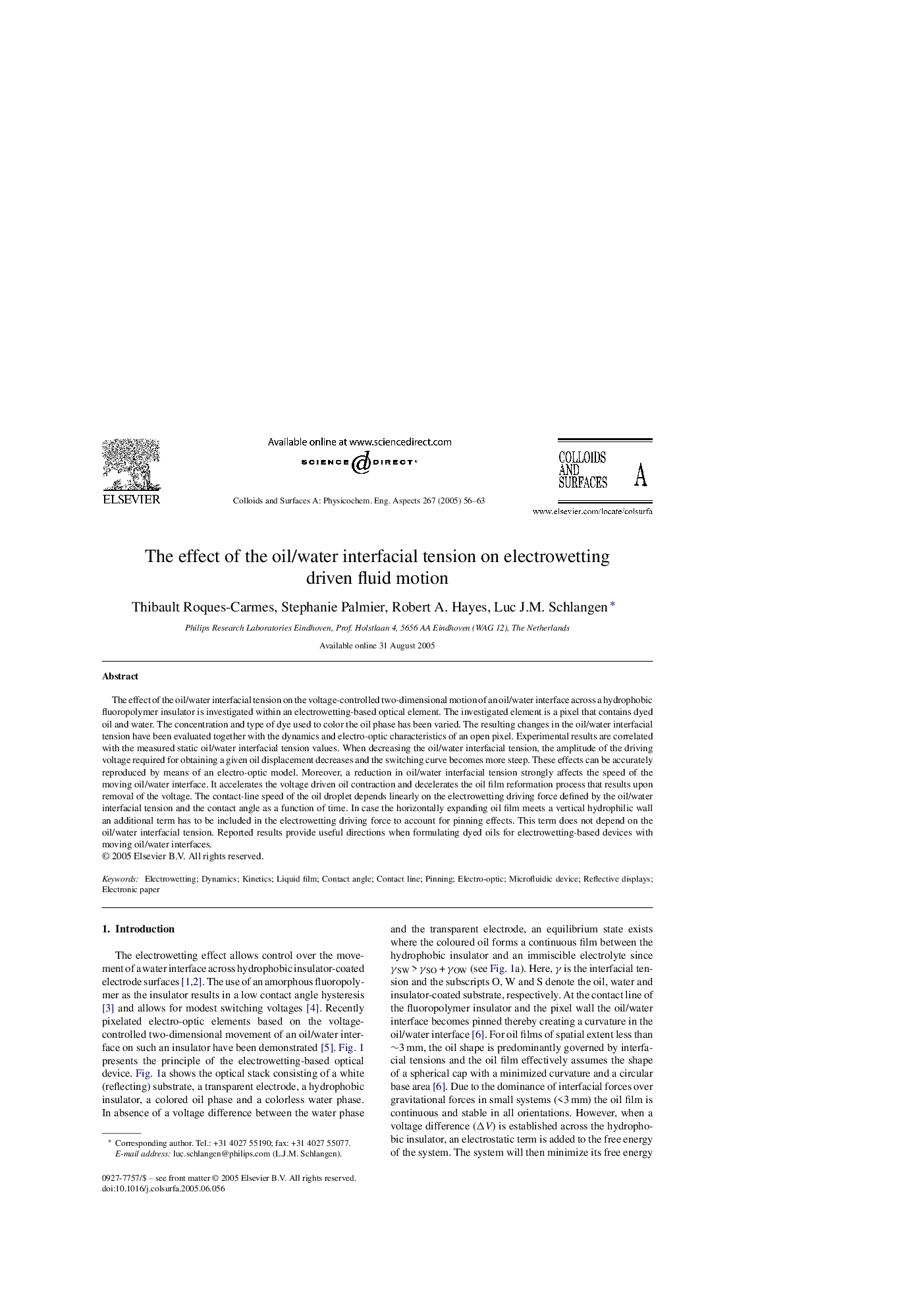| Article ID | Journal | Published Year | Pages | File Type |
|---|---|---|---|---|
| 9675629 | Colloids and Surfaces A: Physicochemical and Engineering Aspects | 2005 | 8 Pages |
Abstract
The effect of the oil/water interfacial tension on the voltage-controlled two-dimensional motion of an oil/water interface across a hydrophobic fluoropolymer insulator is investigated within an electrowetting-based optical element. The investigated element is a pixel that contains dyed oil and water. The concentration and type of dye used to color the oil phase has been varied. The resulting changes in the oil/water interfacial tension have been evaluated together with the dynamics and electro-optic characteristics of an open pixel. Experimental results are correlated with the measured static oil/water interfacial tension values. When decreasing the oil/water interfacial tension, the amplitude of the driving voltage required for obtaining a given oil displacement decreases and the switching curve becomes more steep. These effects can be accurately reproduced by means of an electro-optic model. Moreover, a reduction in oil/water interfacial tension strongly affects the speed of the moving oil/water interface. It accelerates the voltage driven oil contraction and decelerates the oil film reformation process that results upon removal of the voltage. The contact-line speed of the oil droplet depends linearly on the electrowetting driving force defined by the oil/water interfacial tension and the contact angle as a function of time. In case the horizontally expanding oil film meets a vertical hydrophilic wall an additional term has to be included in the electrowetting driving force to account for pinning effects. This term does not depend on the oil/water interfacial tension. Reported results provide useful directions when formulating dyed oils for electrowetting-based devices with moving oil/water interfaces.
Keywords
Related Topics
Physical Sciences and Engineering
Chemical Engineering
Colloid and Surface Chemistry
Authors
Thibault Roques-Carmes, Stephanie Palmier, Robert A. Hayes, Luc J.M. Schlangen,
